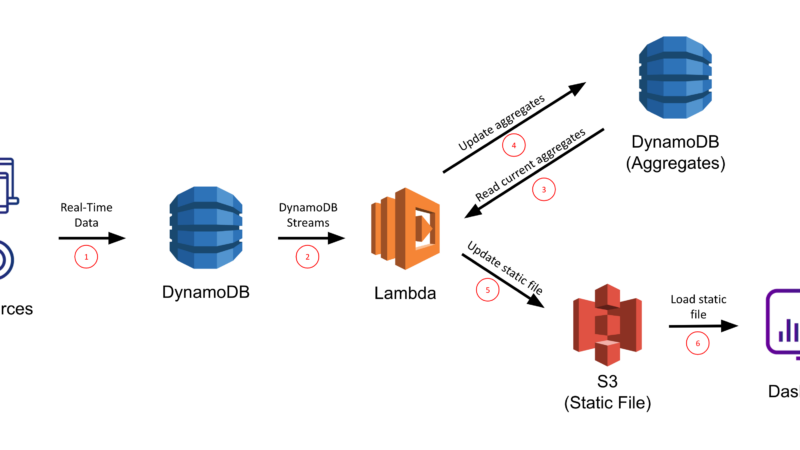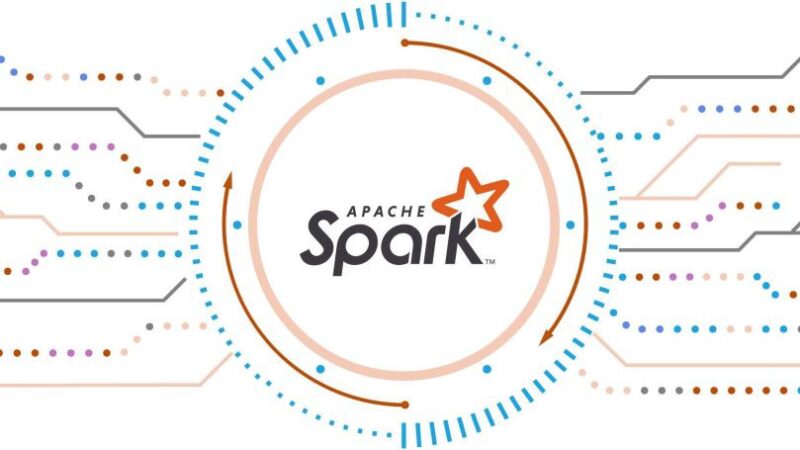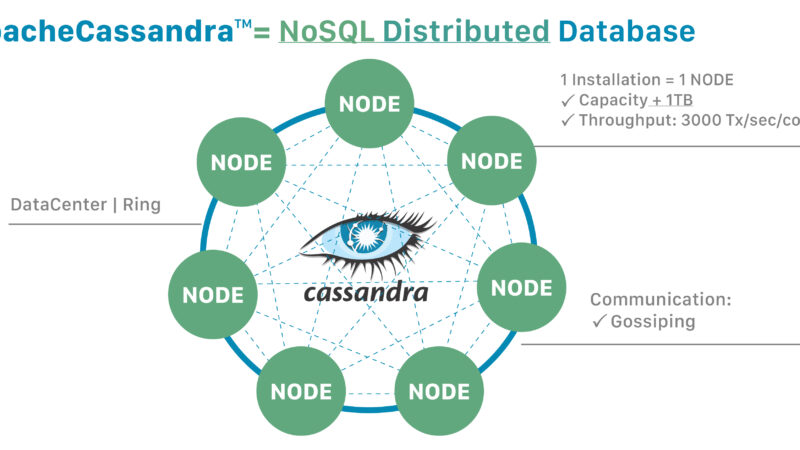Data Structure Interview Questions and Answers for Freshers and Experienced
Data Structure refers to collecting various data values and identifying the relationship between the data and their operations and functions. In other words, it involves the correct organization of data to ensure that you can use it efficiently. Note that you require the data structure knowledge for the implementation of various data types.
Since data structure affects the technological face, it is a popular area to study since it is a marketable industry. However, how do you get ready and ensure that you have the right answers in an interview? This article explains some of the common data structure interview questions and their answers to get you ready for an interview. Check them out!
In simple terms, what is data structure?
Data structure is an important concept in the technical world since its prime goal is algorithmic design. It plays a major role in the effective organization of data. In other words, it is an area that studies data and its representation depending on the relationship between different data types.
Types of data structure
There are two crucial types of data structures including:
- Linear data structure: A data structure is linear if its components are in a linear list or a sequence. Some examples include Linked list, queues, Arrays, Stacks, etc.
- Non-linear data structure: For a non-linear data structure, the elements don’t occur sequentially. Some examples include Graphs, Trees, etc.
Applications of Data Structures
Data structure is the foundation of software engineering since a good algorithm is necessary. However, there are many applications of data structure such as:
- Some data structures such as b-trees suit database implementation
- Hash tables help to build identifiers for compiler implementation
- They assist in different areas such as compiler designing, artificial intelligence, cryptography, Artificial Intelligence, machine learning, Blockchain, Database management, Numerical analysis, and Speech processing
Explain the difference between storage structures and file structure
File structure refers to data representation in auxiliary or secondary memory. For instance, if you store data into pen drives or hard disks, it remains the same until you delete it. And this structure is the file structure
Storage Structure: In this situation, data storage is in the main memory, for instance, the RAM. Data deletion occurs after the function that uses the data executes.
The difference between the two structures is that file structure stores data in the auxiliary memory while storage structure stores data in the computer system’s memory.
How do the two types of data structures differ from each other?
If the data structure components are in a linear list or in sequence, then it forms a linear data structure while the non-linear structure has the nodes in the transversal settings.
How do you explain an array?
The array is a collection of similar data types in various contiguous memory. It is the simplest data structure since it allows the users to access it using the identifiers, index numbers randomly
Explain the multidimensional array
It refers to the arrays that run across two or more dimensions. As a result, two or more index numbers represent a single point in the data structure. Data structures’ experts often use multidimensional arrays when it is impossible to use one dimension. One of the common multidimensional arrays is the 2D array. Under this setting, the data emulate a tabular structure that eases its ability to hold large data files. Note that you can easily access the data via column and row pointers.
The linked list is an example of a linear data structure. Explain
A linked list is a structure whose nodes appear in a sequence form, and each node connects to the others using a reference pointer. All the nodes form a chain that you cant find in adjacent storage locations. Every node features two parts, data field, and reference pointer.
The first node in a chain is the head, and the last node doesn’t have the reference pointer. In other words, the last node has a null reference pointer which indicates that it is the last node. Note that if the list is empty, then even the first node is a null reference.
Is the linked list a linear or non-linear data structure?
Technically, linked lists are both linear and non-linear data structures depending on their application. For instance, when you use a linked list for access strategies, it is linear, and when you use it for data storage purposes, it is non-linear.
Are linked lists more effective than arrays? If yes, then how?
Yes. Linked lists are more effective compared to the arrays in various settings, including:
- Insertion and Deletion: The insertion and deletion process in an array are quite expensive and difficult compared to the linked lists. Because an array insertion and deletion require you to create and shift elements from the existing space, it is easy to do the two processes for the linked list since you only need to update the reference pointer reference.
- Dynamic Data Structure: The linked list is dynamic; hence you don’t have to worry about sizing during the creation phase since the list shrinks and grows depending on the memory allocation. However, the array sizing is complex and limiting.
- No memory storage: Since the size of the linked list increases or decreases depending on the memory, you won’t have memory wastage. On the other hand, the arrays declare the exact size hence wastage of memory is possible.
Explain common areas where you can use linked lists
There are many scenarios where experts use linked lists, including:
- You use linked lists when you have no idea of the number of elements you want to include
- When you know that you will have to add or remove various elements or operations
- When you have few random access elements or operations
- If you want to insert elements in lists, such as the priority queue
Highlight scenarios where you can use arrays
There are various cases where you can choose arrays, including:
- You need arrays when you need to access various elements randomly
- When you know the number of elements involved
- You can use arrays when you need speed in accessing various elements
What is DLL, Doubly-linked List?
DLL is a special type of linked list where the node features two reference pointers. One of them connects to the next node to the chain, while the other reference pointer connects to the prior node.
Define applications of DLL
There are many applications of using DLL, including:
- It is useful while dealing with a music playlist, and you need to access all music
- Browser access
- The redo functionality on various platforms
What is a stack?
It is a data structure under the linear setting and uses the Last In First Out, LIFO approach to access various data components. The basic operations under the stack data structure include push, top, and pop.
What are the applications of the stack?
Here are some of the applications of using stack
- String reversing
- Evaluate an expression’s balanced parenthesis
- Checking the postfix expression
- Reversing the string
Explain the Queue
The queue data structure refers to linear data that allows the FIFO, First in First Out accessing of data elements. Some of the basic operations include dequeue and enqueue.
Define the process of storing variables in the memory
Variables’ storage into the memory depends on the memory size that you need. There are several steps you can follow to store variables, including:
- Assigning the amount of memory you need
- Store the data depending on the data structure type you use
Note that using a dynamic allocation ensures that you can easily access various storage units
What is HashMap in data structure?
Hashmap refers to a data structure that uses hash tables allowing data access in the constant time complexity.
In Java, explain how HashMap data structure handle collisions
The HashMap feature in Java handles collisions by chaining, which involves storing values with the same keys in the linked list. As a result, monitoring the hashing algorithms you use is crucial since the hash table might become a linked list in the worst-case scenario.
Name some data structures you can use to implement the LRU cache
The LRU simple means the least recently used cache whose primary role is to identify the components that aren’t frequently used quickly. It means that the elements follow this type of order. You can use two types of structures that can help you achieve such a feature. The queue and the hashmap.
- Queue: You can implement it using the doubly-linked list. The number of nodes that you can include in the queue depends on the cache. For the LRU, the less frequently used files would appear on the front, while the rear part includes the frequently used data files.
- Hashmap: The hashmap structure allows storing data using the page number as the address.
Explain the Priority Queue
The priority queue works similarly to a regular queue. However, it places priority features on the assignment of the elements. As a result, the components with high priority executes before the elements with low priority. If you want to implement the priority queue, you need two queues where one stores the data while the other stores the priority.
Define the tree data structure and highlight its applications
The tree is an example of a non-linear data structure that includes one or many nodes. The first node is the root, while the others are the children nodes. It is also recursive and organizes data in a hierarchical method. Currently, binary trees are the most popular tree data structure. The applications of tree structures include:
- Filesystems: Under this section, you find that there are files insider a folder or a folder inside another folder
- Social media comments: The tree representation is in the comment section, where people reply to the comments in the social media.
- Family Trees: You can represent a family using a tree. For example, a tree include the parents, children, grandchildren, and grandparents
Explain the tree traversals
Tree traversal refers to the process of viewing all the tree nodes. Naturally, you start with the root node since it is the first one. Later you can travel to other nodes. There are three common ways to traverse the tree data structures.
- Inorder Traversal: This method involves moving from the left nodes to the root and finally to the right subtree. Many experts use the inorder traversal in the BST, Binary search trees
- Preorder Traversal: The first step includes visiting the root, then the left subtree, and finally the right subtree. When viewing the subtree, you start with the root node then to the other nodes. Its main uses include when creating a tree copy and getting prefix expression
- Postorder traversal: For this method, the algorithm first traverses to the left subtree, then to the right subtree, and finally to the root. This algorithm suits the deletion of trees
What is a graph data structure?
A graph is a non-linear data type that includes nodes and vertices connected by links or edges used for data storage. The edges that connect these nodes may either be undirected or directed.
Explain the applications of the graph data structure
Graphs are popular and have many uses, including:
- Neural networks graphs with nodes and edges represent neurons and synapses, respectively
- Transport grids in the situations where the stations and the routes are the nodes and edges, respectively
- Social network graphs help in determining the information flow
- Power utility graphs with vertices representing the connection points and edges representing wires
- Graph data structures help people define the shortest distance between two places
There are two common ways of representing a graph. Highlight them
There are two main ways to represent a graph, including the Adjacency matrix and adjacency list.
- Adjacency matrix: this representation is sequential
- Adjacency List: representation of linked data
What are the differences between the graph data structure and tree data structure?
Tree data structures are always connected and won’t have any loops, while the graph doesn’t need to follow any rules
The graph structure includes a network model, while the tree structure gives you an insight into the existing relationship between various nodes.





